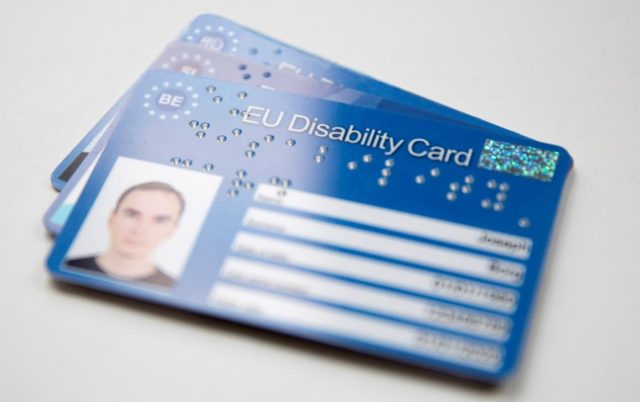
The European Commission has decided, within its EU disability strategy, to launch a comprehensive European Disability Card in 2023. The strategy was presented by the team of Ursula Von der Leyen Commission in March 2021 and aims to deliver by 2030.
In principle, one should think that the EU is a reasonable context where disability status is mutually recognised among Member States.
On the other hand, the United Nations Convention on the Rights of Persons with Disabilities (CRPD) has been ratified by the EU and all Member States.
A former EU Disability Card pilot scheme in eight Member States has shown to be a practical mechanism for the transferability of some disability benefits between Member States. However, such benefits have been limited to access to culture, leisure, sport and transport services.
It should be reminded that, long before this pilot project, the EU parking card scheme (also called “Blue Badge”) for persons with disabilities has existed for more than 20 years, and is recognised across all Member States.
Nevertheless, the portability of social security benefits is a highly sensitive matter, since Article 153.4 of the Treaty on the Functioning of the European Union (TFEU) proclaims that the right to define the fundamental principles of their social security systems and their financial equilibrium remain a Member State’s competence.
Even if fundamental principles and equilibrium of social security systems were not impacted, such portability would still raise considerations of subsidiarity and proportionality. TFEU Article 153.1.c is quite ambiguous, since it extends EU competence to support and complement the activities of the Member States in the fields of social security and social protection of workers, with no further specification.
Portability would in practice imply mutual recognition of administrative disability status, for which there are different definitions of disability.
There are also different types of disability assessment across Member States, including their principles and methods. Some are focused on the person and their impairment characteristics (such as a health condition or their bodily characteristics), while other stress the environment (such as accessibility or inclusiveness) and a final group combine both, that is, they consider the interaction between a person and their environment (as implied by the CRPD).
For example, assessments of reduction in work capacity shows a varying degree across Member States. 22 out of the 27 require a minimum reduction in the capacity for work as a criterium to recognise disability status. Such degrees vary from a rather demanding 66.66% in France and Portugal to a 20% in Malta.
There is also a significant variation in order to acknowledge a so-called total incapacity, or maximum degree of discapacity. This is provided for in 13 out of 27 Member States, with 6 of them (Netherlands, Portugal, Romania, Slovenia, Spain and Sweden) requiring 100% of incapacity, while Hungary and Slovakia only require 70% for a person to be considered totally incapacitated to work.
Another way of assessing disability is needs for long-term care. Here, one can also notice wide differences. 15 Member States require a minimum level of long-term care need in order to recognise a disability, while 12 do not. For both that do and for those that do not, varying assessment criteria apply. For instance, in Spain recognition of disability implies that at least once a day, a person would require help to carry out the most essential daily activities; but in Luxembourg, need for assistance with basic everyday activities only needs to be proven for at least 3.5 hours per week, in order to disability benefits to apply.
On top of portability of the degree of disability, harmonisation could also imply portability of disability pensions, as well as harmonisation of different ways of disability practical recognition, such as national disability cards versus a reference to an administrative register.
For these reasons, we can conclude that a first step of mutual disability recognition, the EU parking card scheme, has been well established among the twenty-seven Member States; and that a further recognition for culture, leisure, sport and transport services seems as a reasonable way forward in order to enhance the EU status of disabled people, while the respective nations provide for the protection of their own nationals.
Furthermore, the EU could adopt a common statement of general principles on disability in line with CRPD and share good practices among the different Member States.



 Subscribe
Subscribe